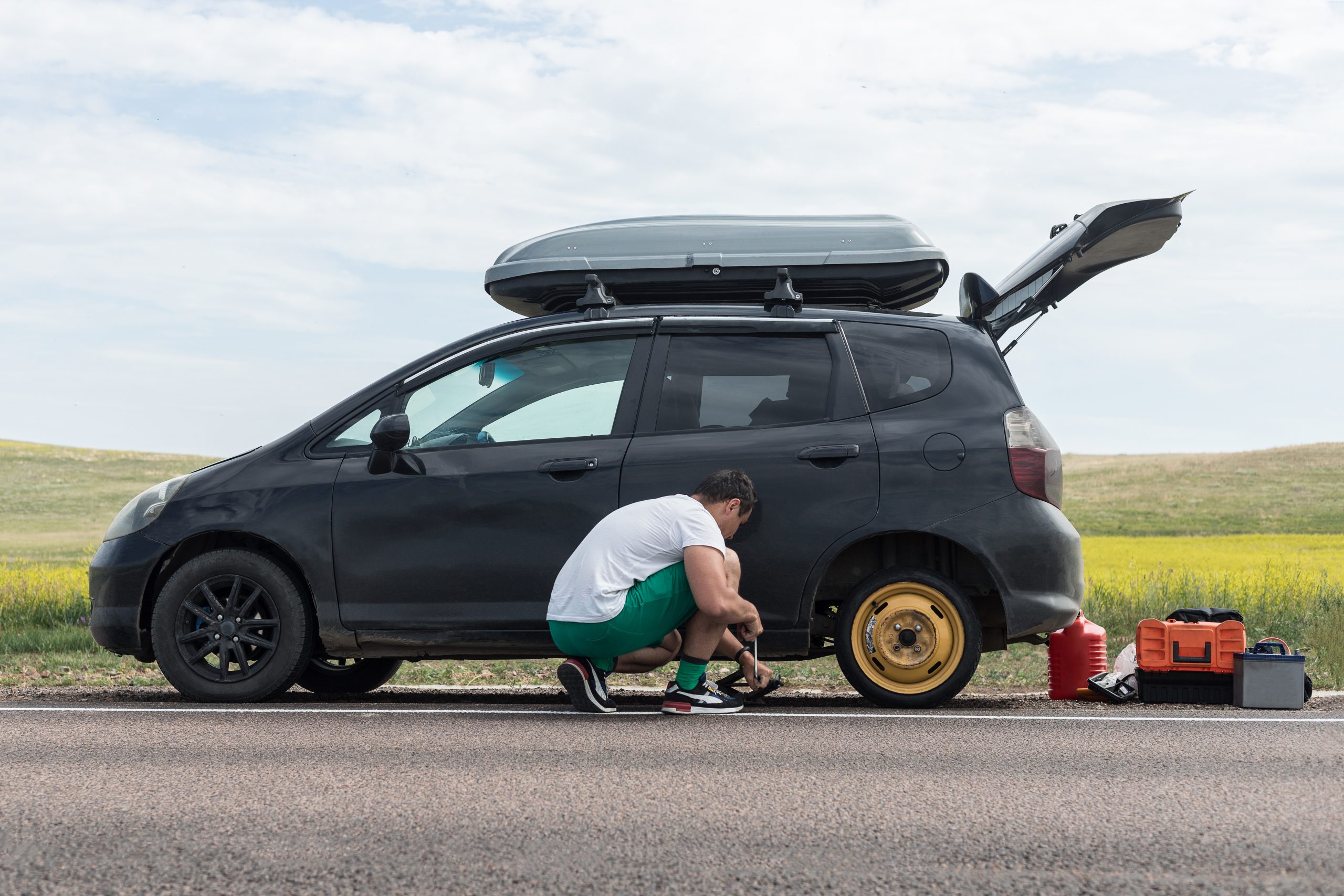

No driver looks forward to a flat tire. But even more, when you get a flat you want to be confident that you have what you need to replace the tire and continue safely on your journey. If you think you are prepared for a flat, you may be overlooking some important considerations. In this month’s blog, we examine four basic guidelines for flat tire preparation.
Guideline #1: Changing a Tire
Be prepared for a flat tire by learning how to change one. When asked, many drivers will admit that they have never had the need to change a tire. But it is important to know, especially if you are unable to get roadside assistance at the time you get a flat.
A simple internet search will yield you many videos that you can watch on how to change a flat tire. Make sure to consult with your vehicle owner’s manual as well, for specific information on your vehicle make and model.
Guideline #2: The Spare Tire
In the process of learning how to change your tire, inspect your spare tire for a few things. First, what type of tire is it? Spare tires come in a variety of sizes and types, from full-sized replacements to temporary replacements (commonly referred to as the donut spare). Each vehicle manufacturer may use something different in your vehicle. And newer vehicles may not even have a spare but use products that can temporarily fill your flat tire with a substance to be able to drive to get it replaced or repaired.
Second, is your spare tire fully inflated? Many drivers never check the air pressure on their spare, and when the time comes to put the spare on the vehicle, may discover it is significantly under inflated. Consult with your vehicle manufacturer for the right air pressure for your spare and check it at least twice a year. It only takes a few minutes but can minimize your stress during a flat tire experience.
Guideline #3: The Toolkit
As you will see when you learn how to replace a tire, the tools that are needed in the process are very important. Check the tools that are in your vehicle to make sure that you have all the basics, including:
- Lug nut remover
- Lug nut lock key (if applicable)
- Car jack device
- Tire pressure gauge
- Inflator
In addition to these tools, it’s always helpful to keep a flashlight or small lantern in the vehicle so that you have adequate light in case you are changing your tire at night.
Guideline #4: Safety
Don’t forget about your safety when changing a tire. Because you are typically changing a tire on the roadside, you want to make sure that you are pulled over a safe distance from vehicle traffic. Always take special precaution when changing a tire and make sure that you and your vehicle are clearly visible to other drivers to avoid any unnecessary accidents.
Also, you should stock your vehicle with specific safety equipment that should be used when you change a tire, including:
- Safety flares
- Safety cones or flags
- Safety clothing
- Hand cleaner and rag
Spend a few minutes this spring to proactively prepare for a flat tire. In the end, it will save you a lot of aggravation and inconvenience.
Contact the service professionals at Colonial Service Station to schedule an appointment if you would like to have your spare tire inspected.
